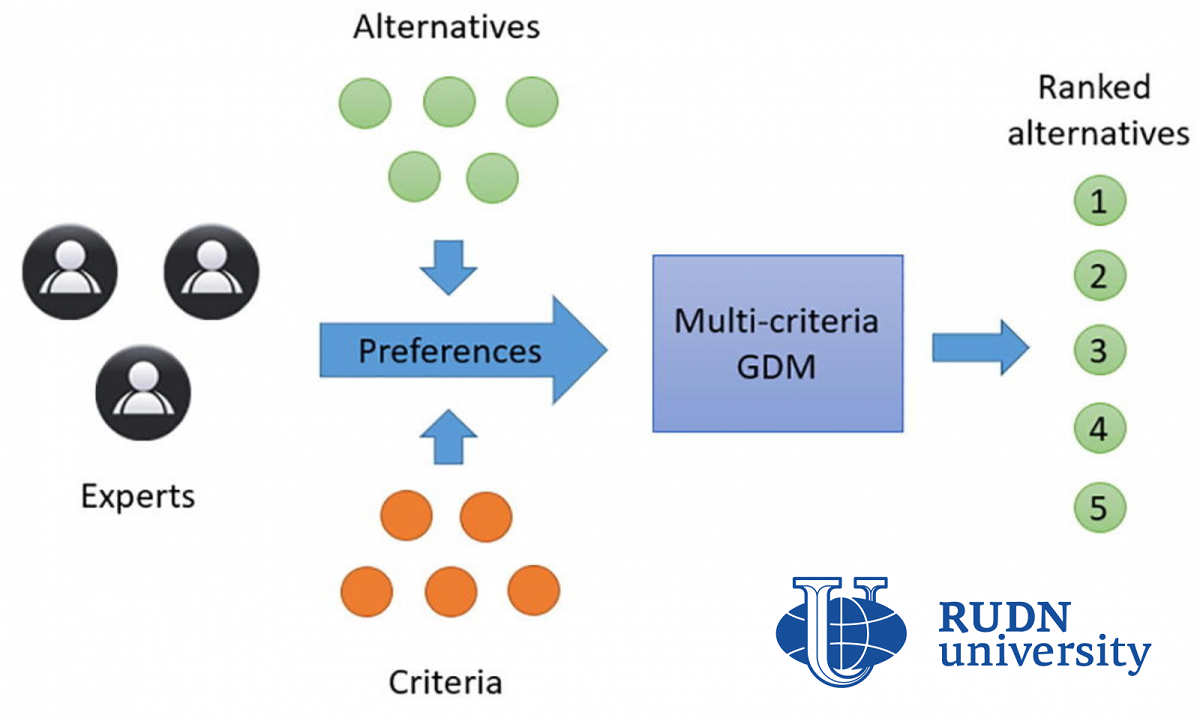Mathematicians Create a Model of Group Decision Making Explaining the Whole Process of Debates

Collective decision-making can be described using mathematical model. The mathematical approach helps to better understand how this process works, as well as automate decision-making for example, at a meeting of experts who must find the best solution among a set of alternatives. They express their preferences and argue them through a set of criteria. Their preferences are “translated” into mathematical language forming a single matrix that is used to calculate the consensus. All research on this topic is aimed at how to calculate opinions, how to find consensus, and so on. However, the question of why experts put forward one or another decision and what arguments they select, remains unexplored.
“Recent multi-criteria group decision making methods focus their analysis on the experts preferences. They do not take into account the reasons why each expert has provided a specific set of preferences. Because of that, the information that is provided about the process is hindered and the decision process cannot be completely understood. That is, it is possible to know which experts agree and have similar opinions, but it is not possible to know why they agree or what are the reasons that make them to be on the same side of the discussion. This information is critical since it allows us to get a full understanding of the process. Nevertheless, most of the recent multi-criteria group decision making methods leave aside this information and only focus on results and consensus measures,” said Konstantin Samuylov, Doctor of Technical Sciences, Director of the Institute of Applied Mathematics and Telecommunications of the RUDN.
RUDN mathematicians with colleagues from Spain, China and Saudi Arabia have proposed a model where argumentation is studied separately. Among the many arguments, only some will be so important that they can influence the overall decision. To understand the behaviour of experts, it is necessary to distinguish such arguments among others. In the proposed model, experts indicate which arguments are decisive in their opinion.
The characteristics of the system are determined based on the analysis of arguments (the key arguments of each round of debates, groups of experts with similar arguments, the most influential expert of each round). As an example they considered a model in which four college employees decide how best to spend money. The set of alternatives consists of four options — buy new computers, organize an exchange program, introduce a new training course, upgrade sports equipment. The selection criteria were durability, impact and efficiency. At the output, the model gives not only the final decision, but also helps to assess which arguments influenced it and whose opinion had the most weight.
“These new argumentation measures, along with consensus measures, help us to get a clear idea about how and why a specific resolution has been reached. They help us to determine which is the most influential expert, that is, the expert whose contributions to the debate have inspired the rest. Also, the proposed method allows us to determine which are the arguments that most of the experts have followed,” said Professor Enrique Herrera-Viedma of RUDN University.
The results are published in Information Sciences.
The project to develop a cellular model of the placenta became the winner in the Scientific Materials category of the Young Scientists 3.0 competition, organized with the support of the Presidential Grants Foundation and T-Bank.
Ten scientific journals published by RUDN University have been included in the highest level of the state list of scientific publications, the White List.
Forests are not only the lungs of the planet, but also home to millions of species. However, it has remained unclear how underground interactions between trees and fungi affect forest species richness in different climatic conditions. Previous studies have yielded conflicting results: in some regions, the dominance of certain fungi reduced tree diversity, while in others it increased it.
The project to develop a cellular model of the placenta became the winner in the Scientific Materials category of the Young Scientists 3.0 competition, organized with the support of the Presidential Grants Foundation and T-Bank.
Ten scientific journals published by RUDN University have been included in the highest level of the state list of scientific publications, the White List.
Forests are not only the lungs of the planet, but also home to millions of species. However, it has remained unclear how underground interactions between trees and fungi affect forest species richness in different climatic conditions. Previous studies have yielded conflicting results: in some regions, the dominance of certain fungi reduced tree diversity, while in others it increased it.